I’ve photographed many things that are objectively beautiful - birds, flowers, landscapes - but I…
Every art show I attend, I have people of all ages walk into my booth and ask me what effects, filters, program…insert digital media here…I use. I proudly answer “none” and watch a variety of expressions that range from delight to confusion dart across their faces. It seems that as a group, we assume anything vibrant and colorful to be digitally constructed. Never mind the signage all over the place that says it is NOT digital, or the 3 x 5 foot banner explaining my process.
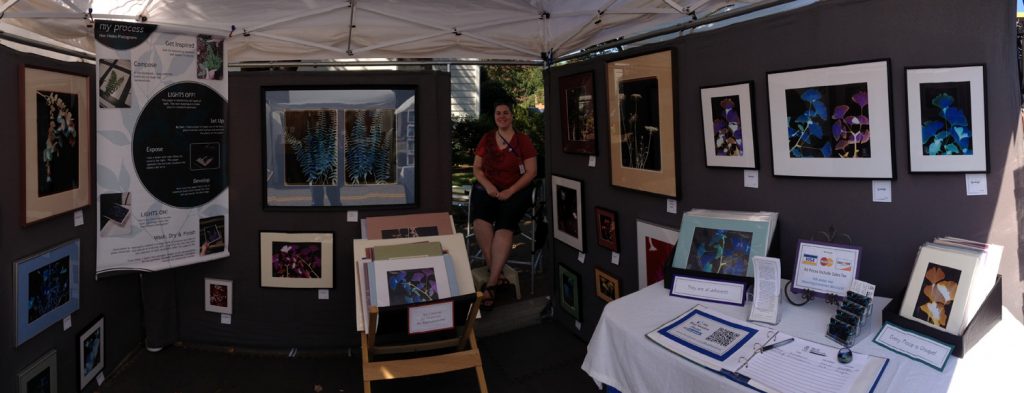
It’s just one more chance for me to champion the awesome powers of the analog photography on my (seemingly) one woman crusade to save the endangered darkroom. But I don’t really mind the questions because I enjoy watching folks realize the true nature of what they are seeing. If they start with the assumption that it is digital, it makes the look on their faces that much sweeter when they realize what they are seeing is not a realistic painting or a scan or a complete fabrication from my mind, it is a one of kind photogram. An alternative photographic image, the likes of which they have never seen before.
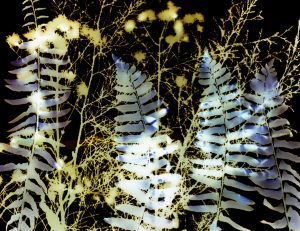
The basic process is placing objects directly onto the surface of a light-sensitive material (such as photographic paper), shinning a light down on it, and then developing the paper. The light filters through the object (so more transparent items are better) and the shadows are captured on the paper. The result is a negative shadow image that shows the variations of the light that filtered through the object. In my case, I use plants and color photo paper and my results look like colorful x-rays of flowers.
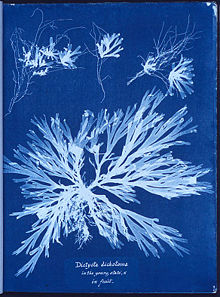
The truth is that Photograms predate cameras. In the early 1800s, at the very beginning of photography, images weren’t permanent and the sun was the primary light source. The first photograms were the result of experimentation with light sensitive solutions painted on various surfaces and they were called “sunprints.” Once the chemistry required to permanently affix an image was discovered, “sunprints” (which give an inverse or negative image) were then contact printed onto another surface (giving a positive image) and became the very first negatives. From there photography was born and cameras (and negatives) evolved rapidly, leaving “sunprints” quickly behind.
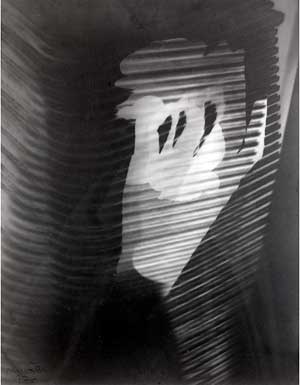
Nearly 100 years later, Man Ray, an avant-garde american artist from the 1920s, re-popularized “sunprints” and called them “rayograms” after himself. He worked in a black and white darkroom and used objects like film or scissors and did strange things like letting dust collect on the surface of his paper. Since Man Ray made them famous again, there has been a constant trickle of artists creating photograms. In fact, this technique is a staple of sorts in darkroom 101 assignments. That said, most of photographers try it and then move on, like an adolescent phase. I guess I never grew out of it.
Since all things darkroom seem to be fading like a 60s Polaroid (maybe less gracefully), photograms have turned into a hidden gem that only photo nerds and five year olds know about. I say this because Sunprint Kits can be found in museum gift shops, hobby stores, and online.
They are essentially a fun, safe and easy way to make a photogram and they look a lot like Cyanotypes (used in the first illustrated book in 1843).
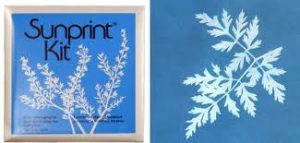
Judging by the number of times I’m told “Oh I did this when I was a kid with those blue papers we put in the sun,” this is how most folks relate to what I do. Looking back on my own childhood, I remember playing with a Sunprint Kit and I can’t help but wonder if maybe that experience planted a seed in my mind that grew over time until I came across the idea again in college.
Anyway, somewhere along my personal artistic journey I found myself totally in love with the darkroom and alternative process imagery, but not really interested in cameras. It was a strange and confusing place to be and I had no clue how to proceed. How do you call yourself a photographer if you aren’t into cameras and digital just isn’t your thing?
Hooked on color photograms and with no other way to build a darkroom, I turned to kickstarter to raise funds. I resigned myself to having to educate the world that the darkroom is NOT dead! To my great delight, it worked and it has been 2 years since my darkroom was funded. As part of the kickstarter platform I’ve been able to stay in touch with my backers and post updates so they can see my progress. Recently I made a video of the darkroom giving a tour and demonstration so those that helped make the darkroom a reality could see what I built with their with financial support. If you are interested in seeing my process in action, please take a look. I hope you enjoy getting to see what it takes to make a color photogram. I take immense pleasure in the knowledge that after 200 years the darkroom is still revealing new ways to “wow” us. All I have to do is show everyone else…
Please share this article with whomever you think might be interested.
You can see Jamie’s work at her website. Also, since Jamie is part of the Orange County Artists Guild Annual Open Studio Tour, you can visit her studio this coming weekend at number 15 on the map. Find out more about this special event and all the artists participating.
This Post Has 2 Comments
Leave a Reply
You must be logged in to post a comment.

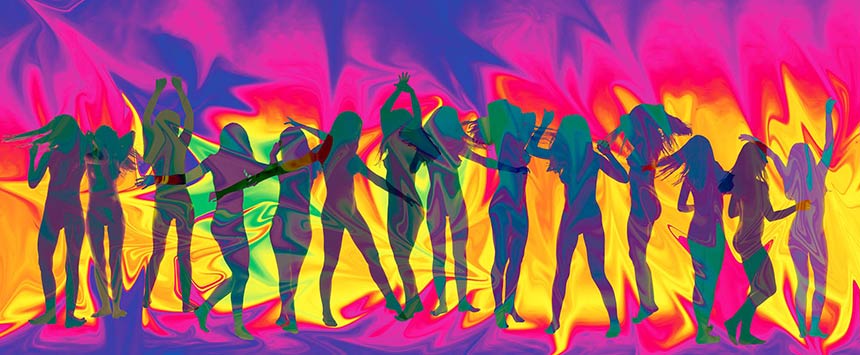
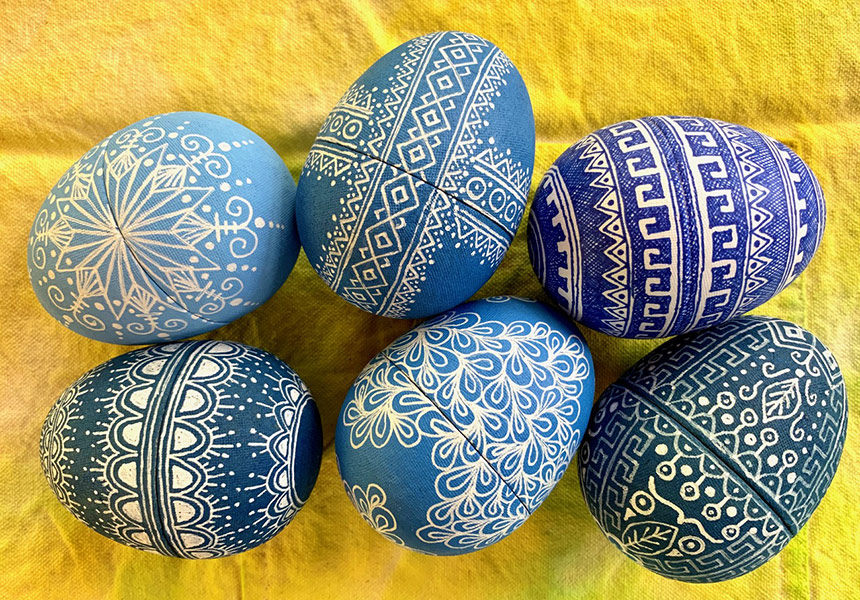
This article was most informative, as well as interesting. And producing a video with a tour and demonstration was so thoughtful, I appreciate the effort! It really brought Jamie’s process to life.
I love your work … I’m the Creative Director of Time Inc Books – and I’d love to chat with you about your photograms . I’ve long been a fan of this technique- but have never done it myself
cheers
Felicity